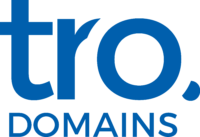Significance of Having an Online Presence
In the modern digital landscape, the importance of establishing a robust online presence cannot be overstated. The internet has fundamentally changed how consumers search for and interact with businesses, making it essential for companies to adapt to these shifts. A well-constructed website serves as the foundation of your business’s digital identity, acting as a hub where potential customers can find comprehensive information about your offerings, contact details, and much more.
One of the primary advantages of a website is its accessibility. Unlike a physical storefront, which has limited operating hours, a website is available 24/7. This constant accessibility allows customers to explore your products or services at their convenience, whether they’re early risers or night owls. This is especially beneficial for attracting customers from different time zones, thereby expanding your market reach.
Moreover, a website enables businesses to provide a richer and more interactive experience compared to traditional marketing methods. Through various multimedia elements such as videos, infographics, and interactive features, you can convey complex information in an engaging manner. This not only helps in capturing the audience’s attention but also in retaining it.
Having a website also allows businesses to establish credibility. In today’s world, a well-maintained website often serves as a measure of professionalism. Customers are more likely to trust and engage with a business that has a polished and informative online presence. Additionally, including testimonials and reviews can further enhance your credibility, offering social proof that can influence potential customers’ decisions.
A crucial aspect of a business’s online presence is the ability to collect data and insights about your audience. With tools like Google Analytics, you can track visitor behaviour, identify popular pages, and understand the demographics of your audience. This information is invaluable for making data-driven decisions, helping you tailor your offerings and marketing strategies to better meet the needs of your target market.
Another significant benefit of a website is the ability to streamline customer interactions and transactions. Features such as contact forms, live chat support, and e-commerce capabilities can simplify the customer journey, making it easier for them to make inquiries, request quotes, or purchase products. This level of convenience can greatly enhance customer satisfaction and loyalty.
In addition to customer-facing benefits, a website also serves as a platform for integrating various business operations. Whether it’s linking your social media profiles, providing downloadable resources, or offering a blog for company updates and industry insights, a website can centralise many aspects of your business. This not only improves efficiency but also ensures a consistent brand experience for your audience.
Furthermore, having a website opens up numerous opportunities for marketing and promotion. From search engine optimisation (SEO) and pay-per-click (PPC) advertising to email marketing and social media campaigns, your website acts as the central hub for all digital marketing efforts. By directing traffic to your site, you can convert visitors into leads and, ultimately, paying customers.
Additionally, the scalability of a website allows it to grow alongside your business. Whether you’re a start-up or an established company, your website can be continually updated and expanded to accommodate new products, services, or features. This flexibility ensures that your online presence remains relevant and effective as your business evolves.
Lastly, a website provides a level of control over your brand’s narrative that is unparalleled by other mediums. You have the ability to shape how your business is perceived, from the messaging and imagery to the tone and style of your content. This control allows you to build a unique and cohesive brand identity that resonates with your audience.
In essence, a website is an indispensable tool for any business looking to thrive in the digital age.
Crafting a Compelling Website
Creating a compelling website involves more than just visual appeal; it’s about delivering an effortless user experience. Essential elements of user-friendly web design encompass intuitive navigation, rapid loading times, and mobile responsiveness. Your website should mirror your brand identity, which can be achieved by consistently incorporating your brand colours, fonts, and logo throughout the design.
Using a Website Builder can greatly streamline the website creation process. These tools offer a variety of templates tailored to different industries and styles, allowing you to build a professional-looking site with ease. In fact, WordPress offers over 11,000 free themes in its official marketplace, providing a wide array of options for customisation.
Navigation is a critical aspect of web design. Visitors should be able to find what they are looking for without any hassle. A well-structured menu, clear headings, and a logical page hierarchy can greatly enhance the user experience. Dropdown menus and a search bar can further assist in making the navigation process smoother.
Loading speed is another crucial factor. In today’s fast-paced world, users have little patience for slow websites. Various studies have shown that even a one-second delay in loading time can significantly impact user satisfaction and conversion rates. Optimising images, leveraging browser caching, and using Content Delivery Networks (CDNs) can help improve your site’s loading speed.
Mobile responsiveness is no longer optional; it’s a necessity. With an increasing number of users accessing websites via smartphones and tablets, ensuring that your site is mobile-friendly is essential. Responsive design adjusts the layout and elements of your site to fit different screen sizes, providing a seamless experience across all devices.
Content layout also plays a vital role in creating a compelling website. Using whitespace effectively can make your content more readable and less overwhelming. Grouping related information together and breaking up text with images or multimedia elements can also make the content more engaging.
Interactive features such as contact forms, live chat, and customer reviews can significantly enhance user engagement. These features not only provide immediate assistance to visitors but also create a more interactive and dynamic user experience. Including calls to action (CTAs) throughout your site can guide visitors towards taking specific actions, such as making a purchase or subscribing to a newsletter.
Visual elements like images, videos, and infographics can make your website more appealing and informative. High-quality images and professionally produced videos can create a lasting impression on visitors. However, it’s important to strike a balance; too many visual elements can slow down your site and distract from the main content.
Fonts and typography should be chosen carefully to ensure readability. Avoid using too many different fonts, and make sure that the text is large enough to be easily read on all devices. Consistency in font usage can also contribute to a cohesive and professional appearance.
Lastly, accessibility should be a priority in your web design. Ensuring that your site is accessible to users with disabilities not only broadens your audience but also demonstrates social responsibility. Features such as alternative text for images, keyboard-friendly navigation, and readable font sizes can make a significant difference.
By focusing on these key elements, you can craft a website that is not only visually appealing but also functional, engaging, and reflective of your brand’s identity.
Optimising for Search Engines
To enhance the visibility of your website and attract a broader audience, optimising for search engines is indispensable. Search Engine Optimisation (SEO) encompasses a variety of practices designed to improve your site’s ranking on search engine results pages (SERPs). A higher ranking can lead to increased traffic, greater brand awareness, and ultimately more conversions.
One of the foundational elements of SEO is the use of meta tags. Meta tags, including title tags and meta descriptions, provide search engines with essential information about your webpage’s content. The title tag should be concise yet descriptive, incorporating relevant keywords that reflect the content of the page. The meta description, although not directly influencing rankings, can impact click-through rates by offering a brief, compelling summary of what visitors can expect to find.
Another critical component of SEO is creating a sitemap. A sitemap is a file that lists all the pages on your website, helping search engines crawl and index your site more efficiently. Submitting your sitemap to search engines like Google ensures that they are aware of all your pages, even those that might be buried deep within your site’s structure.
Mobile-friendliness is an increasingly important factor in SEO. With the growing number of users accessing the internet via mobile devices, search engines like Google prioritise mobile-friendly websites in their rankings. Ensuring your site is responsive, meaning it adjusts seamlessly to different screen sizes, can significantly enhance your SEO efforts.
Keyword optimisation remains a cornerstone of effective SEO. Identifying the terms and phrases that potential customers are likely to use when searching for products or services similar to yours is crucial. Tools such as Google Keyword Planner or SEMrush can assist in conducting thorough keyword research. Once identified, these keywords should be naturally integrated into your content, including headings, subheadings, and body text, to improve relevance and ranking.
Content quality is equally important. Search engines favour websites that offer valuable, informative, and well-structured content. This means that your content should not only be rich in keywords but also engaging and helpful to your audience. Long-form content, such as comprehensive guides and detailed articles, tends to perform better in search rankings.
Backlinks are another significant factor in SEO. These are links from other websites that point to your site, serving as a vote of confidence in your content’s quality and relevance. Building a strong backlink profile involves reaching out to industry influencers, writing guest posts, and creating shareable content that others are likely to reference. High-quality backlinks from reputable sites can greatly enhance your website’s authority and ranking.
Technical SEO should not be overlooked. This includes optimising your site’s speed, ensuring secure connections (HTTPS), and fixing any broken links or errors. Fast-loading pages not only improve user experience but are also favoured by search engines. Similarly, a secure website can boost your credibility and ranking.
User experience (UX) plays a vital role in SEO. Search engines aim to provide the best results for their users, so a website that offers a seamless, intuitive experience is more likely to rank higher. This involves easy navigation, clear calls to action, and a clean, organised layout.
Local SEO is essential for businesses aiming to attract local customers. This includes claiming your business on Google My Business, optimising for local keywords, and encouraging customer reviews. These practices can help your business appear in local search results, increasing your visibility to nearby customers.
Strategy for Website Content
A strong content strategy is crucial for maintaining relevance and engaging your audience. Regularly updating your website with fresh and high-quality content not only keeps visitors interested but also signals to search engines that your site is active, which can positively influence your rankings. The sheer volume of content being created daily is immense; 27 new posts are published every second on WordPress, highlighting the vast amount of content being created daily.
One of the first steps in developing a content strategy is identifying your target audience and understanding their needs, preferences, and pain points. Conducting audience research can help you tailor your content to meet these needs effectively. This might involve creating detailed buyer personas, which can guide the tone, style, and subjects of your content.
Consistency is key in content creation. Establishing a content calendar can help ensure regular updates, providing your audience with new material to engage with on a consistent basis. This also helps in planning ahead for seasonal events, promotions, or industry-specific trends.
Quality over quantity is a principle to keep in mind. While regular updates are important, the content must also be valuable, informative, and engaging. Long-form content, such as comprehensive guides and detailed articles, tends to perform better in search rankings and provides more value to your audience. Each piece of content should serve a clear purpose, whether it’s to inform, entertain, or persuade.
Utilising different types of content can also enhance engagement. Blog posts, videos, infographics, podcasts, and eBooks each have their own unique advantages and can cater to different segments of your audience. Multimedia content, in particular, can be very engaging and is often more shareable on social media platforms.
Optimising your content for SEO is essential. This includes incorporating relevant keywords naturally into your text, using meta descriptions and title tags, and ensuring that your content is easily readable and well-structured. Internal linking to other relevant pages on your site can also help keep visitors engaged and improve your site’s SEO.
Encouraging user-generated content can add a layer of authenticity to your site. This could be in the form of customer reviews, testimonials, or even guest blog posts. User-generated content not only provides social proof but also adds fresh perspectives and insights that can enrich your website.
Regularly analysing the performance of your content is crucial. Using analytics tools, you can track metrics such as page views, time spent on page, and conversion rates. This data can offer valuable insights into what types of content resonate most with your audience and inform future content strategies.
Merging Social Media Platforms
Integrating your social media platforms with your website is a strategic move that can significantly enhance your online presence. This integration provides multiple avenues for engagement, making it easier for your audience to interact with your brand. Adding social media buttons to your website allows visitors to share your content effortlessly, thereby extending your reach and visibility.
One effective method of integration is to incorporate social media feeds directly onto your website. This feature can display your latest posts, tweets, or updates in real time, offering fresh content and encouraging visitors to follow your social media accounts. This dynamic element not only keeps your website current but also showcases your active engagement on various platforms.
Consistent branding is essential when merging social media with your website. Ensure that your website and social media profiles use the same logos, colour schemes, and typography. This uniformity helps in building a strong brand identity, making your business easily recognisable across different channels. When users see a cohesive brand image, it fosters trust and reliability.
Another valuable integration is the use of social login options. Allowing users to sign in or register on your website using their social media accounts can simplify the process and enhance the user experience. This not only makes it more convenient for visitors but also encourages higher engagement rates.
Social proof is a powerful tool in building credibility and trust. Displaying social media testimonials, reviews, or user-generated content on your website can add an authentic layer of validation for your brand. Potential customers are more likely to trust the opinions of their peers, and featuring these endorsements prominently can positively influence their purchasing decisions.
Interactive elements such as social media contests, polls, or hashtag campaigns can be promoted on both your website and social media platforms. These activities not only boost engagement but also drive traffic between your website and social media profiles. By encouraging users to participate, you create a more interactive and community-driven online presence.
Utilising social media analytics alongside website analytics offers a comprehensive view of your audience’s behaviour and preferences. Insights gained from social media interactions can inform your content strategy, helping you tailor your website content to better meet the needs and interests of your audience. For instance, if a particular type of post performs exceptionally well on social media, consider creating similar content for your website.
Embedding social media videos, such as YouTube or Instagram clips, into your website can make your content more engaging. Videos are highly effective in capturing attention and can convey your brand message more dynamically than text alone. However, ensure that these multimedia elements are optimised to avoid slowing down your site’s loading speed.
Calls to action (CTAs) linked to your social media profiles can also be strategically placed throughout your website. Whether it’s prompting visitors to follow your social media accounts, share content, or join a community, these CTAs can drive higher engagement and build a more connected audience.
By thoughtfully merging social media platforms with your website, you create a seamless and integrated online presence that leverages the strengths of both mediums. This strategic approach not only enhances user experience but also amplifies your brand’s reach and influence in the digital landscape.
Tracking and Analysing Performance
Monitoring your website’s performance is essential for understanding its effectiveness and making data-driven decisions. By employing analytics tools, you can gather valuable insights into visitor behaviour, popular content, and conversion rates. This data enables you to refine your strategies and optimise your website to better meet your business objectives.
One of the key benefits of using analytics tools is the ability to track visitor behaviour. This includes metrics such as page views, time spent on site, and bounce rates. Understanding how users interact with your website can help you identify areas where improvements are needed. For instance, if visitors are leaving a particular page quickly, it may indicate that the content is not engaging or relevant.
Conversion rates are another crucial metric to monitor. These rates indicate the percentage of visitors who complete a desired action, such as making a purchase or signing up for a newsletter. By analysing conversion rates, you can determine which aspects of your website are most effective at driving these actions and which areas need enhancement.
In addition to visitor behaviour and conversion rates, it is also important to analyse the performance of your content. This involves identifying which pages or blog posts are most popular and understanding why they resonate with your audience. Content that performs well can provide valuable insights into what your audience is looking for, allowing you to create more of the same type of content in the future.
Impressively, each day, 409 million people view over 20 billion pages on WordPress sites, underscoring the vast potential audience available online. This statistic highlights the importance of effectively tracking and analysing your website’s performance to tap into this expansive audience.
Analytics tools can also provide insights into the sources of your traffic. Understanding where your visitors are coming from—whether it’s search engines, social media, or direct visits—can help you tailor your marketing efforts more effectively. For example, if a significant portion of your traffic comes from social media, you might invest more resources into those channels.
Finally, using analytics to track the performance of different marketing campaigns can help you assess their effectiveness and return on investment. By comparing metrics before and after a campaign, you can determine what works best and allocate your marketing budget more efficiently.
Overall, consistent monitoring and analysis of your website’s performance are key to ensuring its success and continuous improvement.



